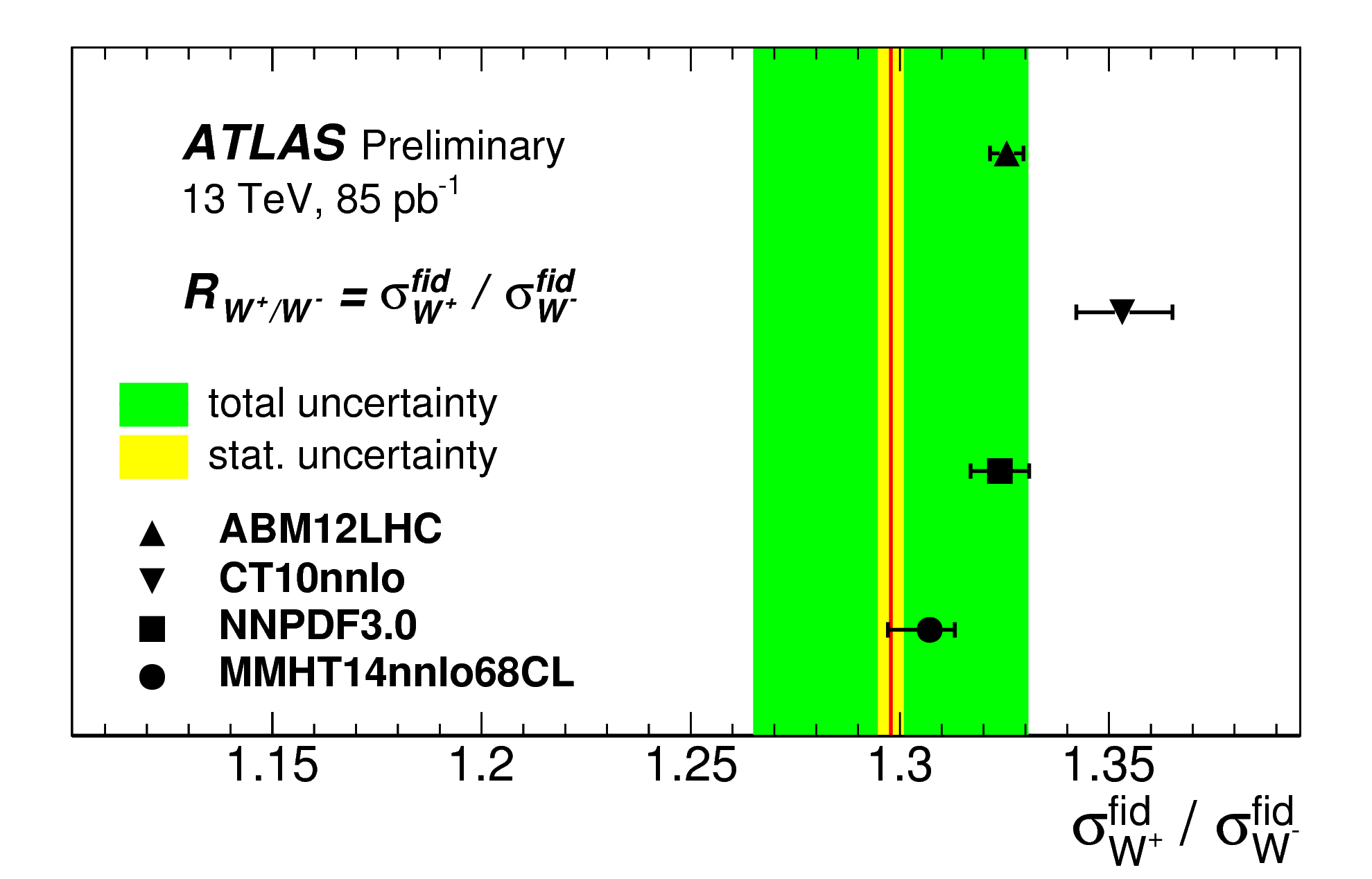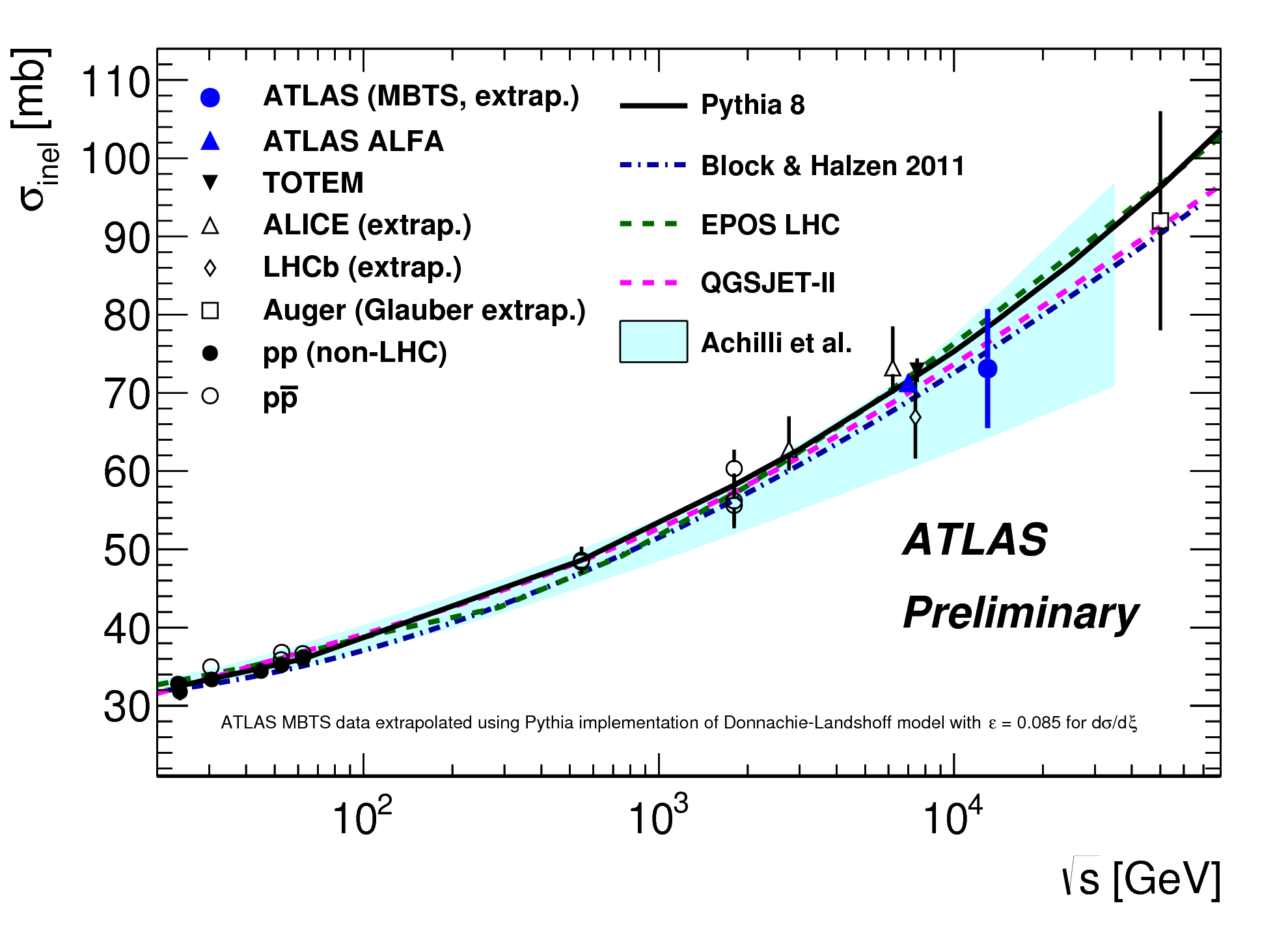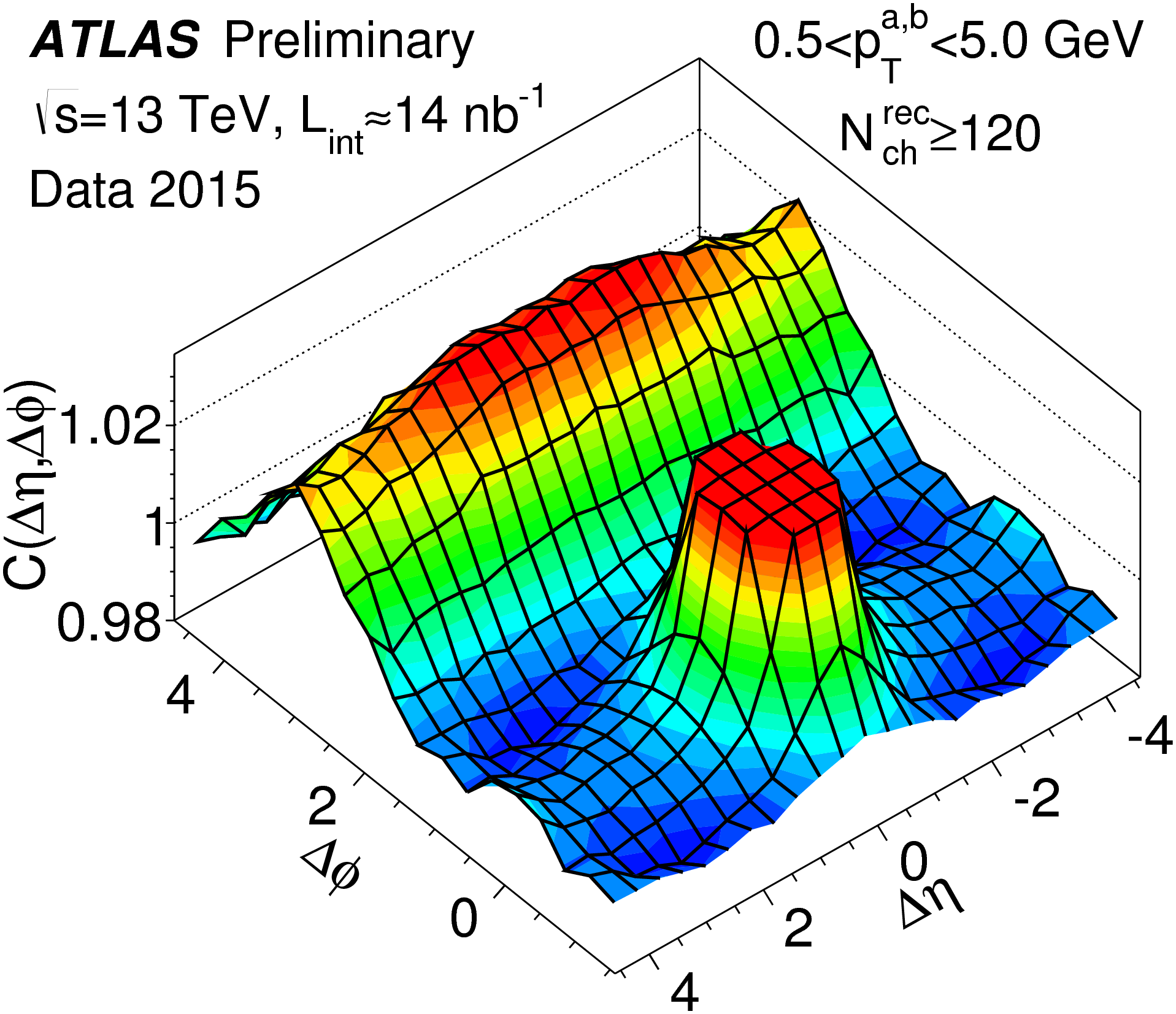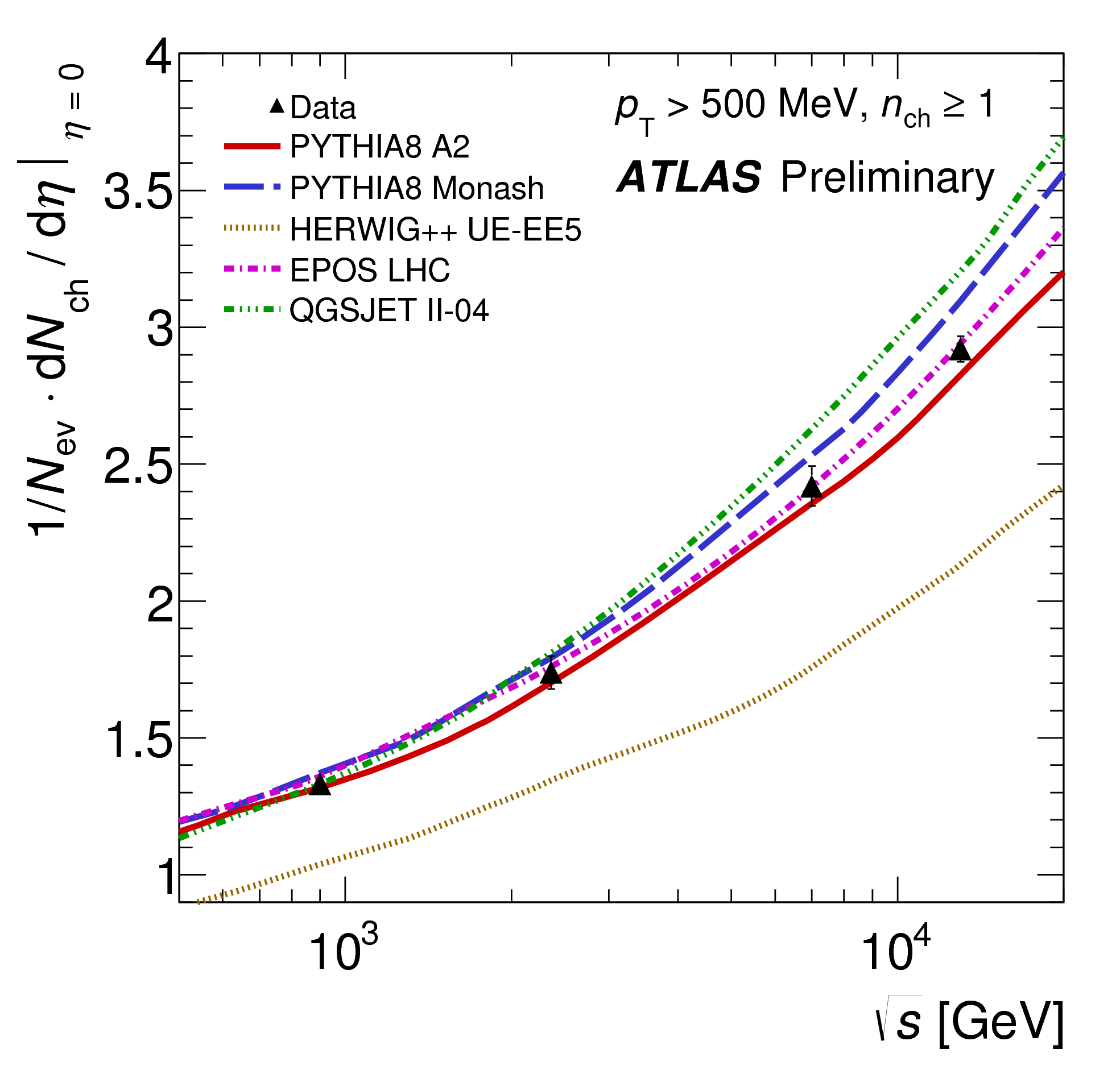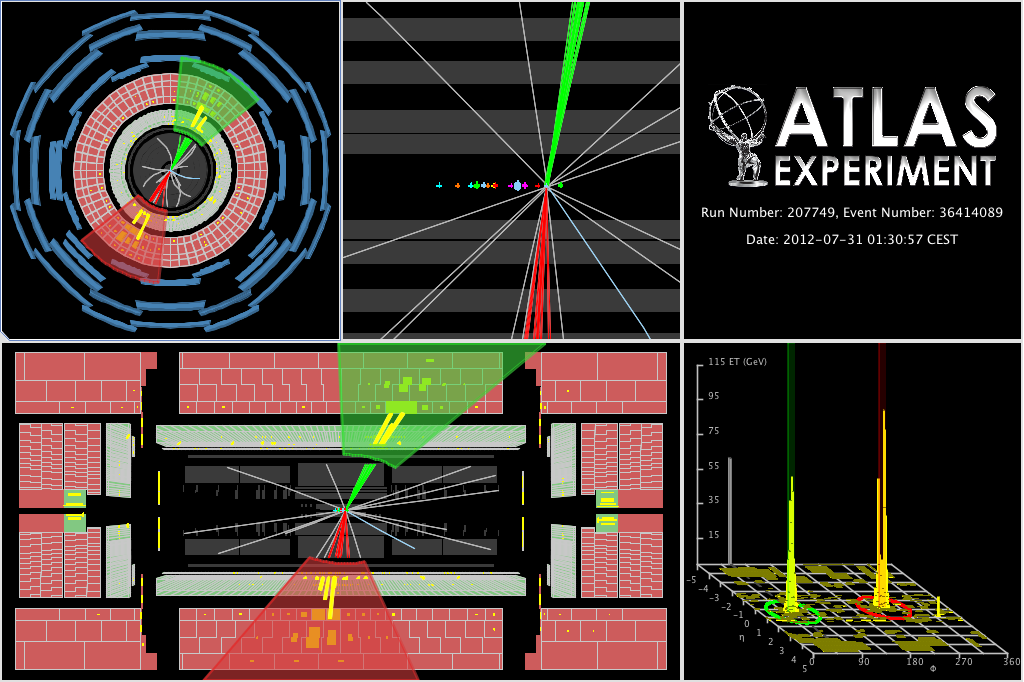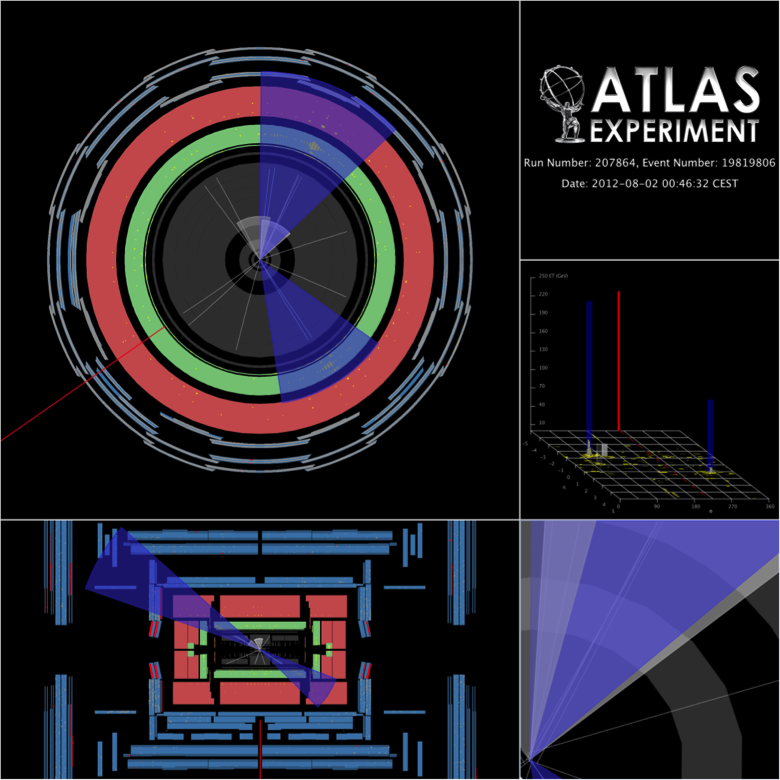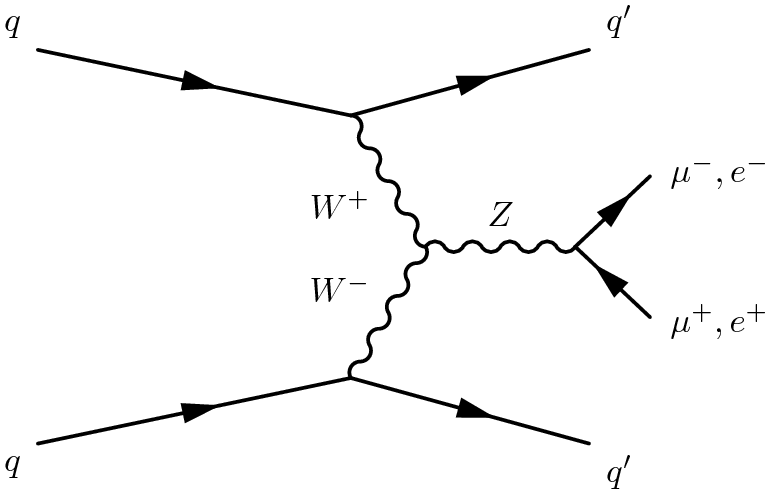Briefings
Probing inside the proton
W and Z bosons are the massive carriers of the weak force, responsible for radioactive decays. These bosons also couple closely to the Higgs boson. W and Z bosons are produced at a large rate in proton-proton collisions at the LHC, where ATLAS physicists have now measured the rates for W and Z boson production using 13 TeV proton-proton collisions
Measuring the way protons interact at 13 TeV
One of the most basic quantities in particle physics, the rate at which protons scatter off of one another (the cross section), cannot be calculated from the theory of strong interactions, quantum chromodynamics. It must instead be measured, and those measurements can then be used to tune the numerical models of LHC proton–proton collisions.
ATLAS ready to “boost” Run 2 physics
A new set of techniques is being used to identify highly energetic top quarks, W and Z bosons, and Higgs bosons decaying to quarks and, ultimately, to hadrons measured in ATLAS. Signatures of these “boosted” Standard Model particles are particularly useful when searching for massive new particles and measuring processes at high energies.
Top quarks in Run 2 are spot on
With a precision of just under 14% − currently dominated by our ability to understand how many proton-proton collisions have occurred at ATLAS (i.e. luminosity) − this measurement is able to confirm that quantum chromodynamics, the theory of the strong interaction, still seems to be going strong!
Of mesons and bosons
ATLAS is ready for detailed physics studies. The experiment used early data collected from the LHC’s Run 2 to calibrate its detectors. Measurements of the production and leptonic decay of certain particle resonances have shown that the detectors and software are working as expected.
First measurements set the stage for early searches of new physics
Jets are collimated sprays of hadrons generated from quarks and gluons, produced either directly in the proton-proton collision or as a part of the decay of W bosons, Z bosons, Higgs bosons, top quarks or new particles yet to be discovered. In fact, all W, Z and Higgs bosons decay most often to quarks which form jets.
ATLAS measurements of the ridge in proton-proton collisions at 13 TeV
Previous studies of two-particle angular correlations in proton-proton, proton-lead, and lead-lead collisions at the LHC have provided important insight on the physics of the particle production process. On 24 July, Atlas presented new preliminary measurements of two-particle correlations...
Early Run 2 results test event generator energy extrapolation
On 23 July 2015, ATLAS presented its first measurements of soft strong interaction processes using charged particles produced in proton–proton collisions at 13 TeV centre-of-mass energy delivered by the Large Hadron Collider at CERN. These measurements were performed with a dataset collected beginning of June under special low-luminosity conditions.
Run 1 search for new massive bosons builds excitement for Run 2
The ATLAS experiment is now taking data from 13 TeV proton-proton collisions. The increased collision energy and rate in these Run 2 collisions will allow physicists to carry out stronger tests of many theoretical conjectures, including several theories that predict more massive versions of force-carrying particles like the W and Z bosons.
ATLAS further verifies Standard Model coupling/mass relationship of Higgs boson
The discovery of a Higgs Boson in 2012 by the ATLAS and CMS experiments marked a key milestone in the history of particle physics. It confirmed a long-standing prediction of the Standard Model, the theory that underlines our present understanding of elementary particles and their interactions.
The scalar boson
The ATLAS experiment has released results confirming that the Higgs boson has spin 0 (it is a so-called “scalar”) and positive parity as predicted by the Standard Model, making it the only elementary scalar particle to be observed in nature.
In search of rare Higgs boson production with top quarks
In proton-proton collisions, several processes can lead to the production of a Higgs boson. The most “frequent” process (which is about one collision in four billion!) is the fusion of two gluons, contained in the initial protons, into a Higgs boson through a “top-quark loop”. Least frequent is a mode where the Higgs boson is produced in association with a pair of top-quarks.
Looking at the Dark side of Matter
The search continues for dark matter, a new kind of matter that doesn’t emit or absorb light. It is assumed to account for the missing amount of mass in our Universe. The total mass in our Universe can be inferred from the observation of gravitational effects of stars in galaxies, and galaxies in clusters of galaxies. However the amount of mass calculated from the observed distribution of light is much less. It is proposed that dark matter makes up the discrepancy as it does not emit light.
In search of super charm
If all the experimental evidence supports a theory, why should anyone want to dream up additional particles? Yet exactly this situation arose in the late 1960s. At that time, when the complete table of the known hadrons could be explained with just three quarks, theorists were already proposing a fourth, which they whimsically called “charm”.
Quenching jets in the hot dense matter produced by colliding lead ions
The Large Hadron Collider is known to collide protons, but for one month a year, beams of lead ions are circulated in the 27-km tunnel and made to collide in the centre of the experiments. The ATLAS experiment has made new precise measurements of the suppression of jets as they blast through the dense matter created by the lead ion collisions.
New ATLAS precision measurements of the Higgs boson: Observation of WW decay
The Standard Model makes many different predictions regarding the production and decay properties of the Higgs boson, most of which can be tested at the Large Hadron Collider (LHC). Since the discovery, experimentalists from the ATLAS collaboration have analysed the complete dataset recorded in 2011 and 2012, have improved the calibration of the detector, and have increased substantially the sensitivity of their analyses.
Searches for new physics with photons produced at vertices displaced from the collision point
Theories, such as supersymmetry, propose the existence of new types of particles to explain important questions about the universe, such as the nature of dark matter. ATLAS has performed a search for one such type – exotic heavy particles that have lifetimes long enough that they travel partway through the detector before decaying, at what is called a displaced vertex.
Higgs boson production measurements from the channels of discovery
The discovery of the Higgs boson by the ATLAS and CMS collaborations in 2012 marked a new era in particle physics because it completed the Standard Model and gave us another tool to explore territories beyond. The Standard Model predicts precisely the interactions of the Higgs boson to all other elementary particles once its mass is measured.
First observation of Z-boson production via weak-boson fusion
The fusion of two weak bosons is an important process that can be used to probe the electroweak sector of the Standard Model. Measurements of Higgs production via weak-boson fusion are crucial for precise extraction of the Higgs-boson couplings and have the potential to help pin down the charge conjugation and parity of the Higgs boson. A similar process, weak-boson scattering, is sensitive to alternative electroweak symmetry-breaking models and to anomalous weak-boson gauge couplings. These processes are extremely rare and the experimental observation of the production of heavy bosons via weak-boson fusion has become possible only recently with the large centre-of-mass energy and luminosity provided by the LHC. Extracting the signals from the huge backgrounds in the high pile-up conditions at the LHC is a major challenge.
ATLAS finds evidence for the rare electroweak W±W± production
The Standard Model of particle physics has been extremely successful in predicting a vast variety of phenomena – so successful, that it is easy to forget that some of its predictions have not yet been verified. A very important one, related intimately to electroweak symmetry breaking, is that the gauge bosons (γ, W and Z) can interact with each other through quartic interactions.
Probing Higgs boson production properties
ATLAS has measured properties of events likely to contain a Higgs boson, in order to get a better understanding of the frequency and manner in which they are produced. The study specifically examines the fiducial and differential cross sections for Higgs bosons that decay into two photons or into two Z bosons, using proton-proton collisions recorded by ATLAS in 2012.
The Higgs boson’s shadow
ATLAS physicists have studied the “shadow” of the Higgs boson far above its mass peak in an analysis of the full sample of 8 TeV proton-proton collisions delivered by the LHC in 2012. The study involves Higgs boson decays into two Z bosons, which themselves decay into four charged leptons or two charged leptons plus two neutrinos. Among other interesting properties, it provides new insight into the lifetime, or natural width, of the Higgs boson.
The WW cross-section: a high flyer
The production of pairs of heavy bosons, such as two Z bosons, a Z and a W boson, or the more challenging pair of W bosons (WW), are processes that particle physicists are passionate about because they cover a rich spectrum of phenomena. The WW channel, in particular, represents a substantial experimental challenge. In the events considered for this measurement, each W boson decays into an electron or a muon plus a neutrino that remains undetected and is reconstructed through the presence of missing energy in the event.
Are quarks fundamental particles?
From decades of discoveries made at particle colliders, we know that protons are composed of quarks bound together by gluons. We also know that there are six kinds of quarks, each one with its associated antiparticle. But are quarks fundamental? ATLAS searched for signs that quarks may have substructure in its most recent data, collected from the LHC’s proton-proton collisions in 2012.
Counting collisions with ALFA
Data from a special run of the LHC using dedicated beam optics at 7 TeV have been analysed to measure the total cross-section of proton-proton collisions in ATLAS. Using the Absolute Luminosity For ATLAS (ALFA), a Roman Pot sub-detector located 240 metres from the collision point, ATLAS has determined the cross-section with unprecedented precision to be σtot (pp → X) = 95.4 ± 1.4 millibarn.

